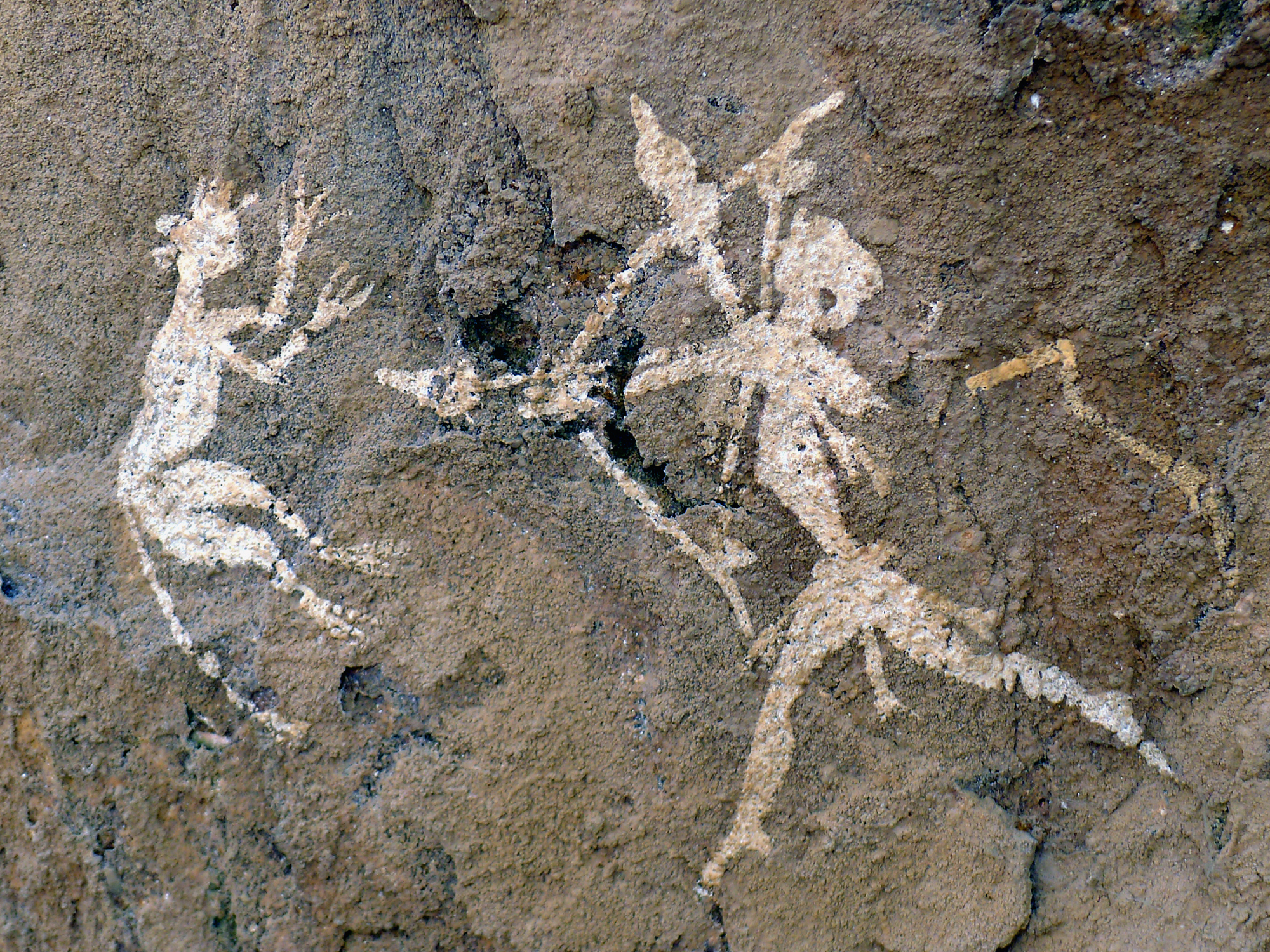


The subject matter of the Pachmarhi paintings is rich and varied; hunting, dancing, gathering, religious rites, and domestic scenes. All aspects of life are reflected on the richly-hued walls of the rock shelters. In the rock paintings, ancestors are depicted dancing in pairs, or in rows, and playing musical instruments. They hunted animals and collected honey from the hives of wild bees.
The styles of the rock art range from the naturalistic or representational to the symbolic or abstract. The former tend to be monochrome or bichrome outlines. Nearly all depictions of animals are shown in profile and in motion, often with patterned interiors.
The descendants of the original hunters and gatherers of Pachmarhi are the tribal Korku and Gond, who still uphold some of the traditions of their ancestors. The tribes living in these hills have wooden memorial boards on which are carved depictions of horse and rider, akin to those painted in rock shelters by their ancestors predecessors. During the rainy season and on festive occasions walls of the houses are painted with figures and symbols reflected in the rock art. Here there exists a living tradition born from very deep roots.
See more on the rock art of Pachmarhi and the research of Dr Meenakshi Dubey-Pathak, as well as the rock art of Central India by Dr Jean Clottes.
Photographs compiled by Dr. Meenakshi Dubey Pathak. All Images Subject to Copyright by the author.






































